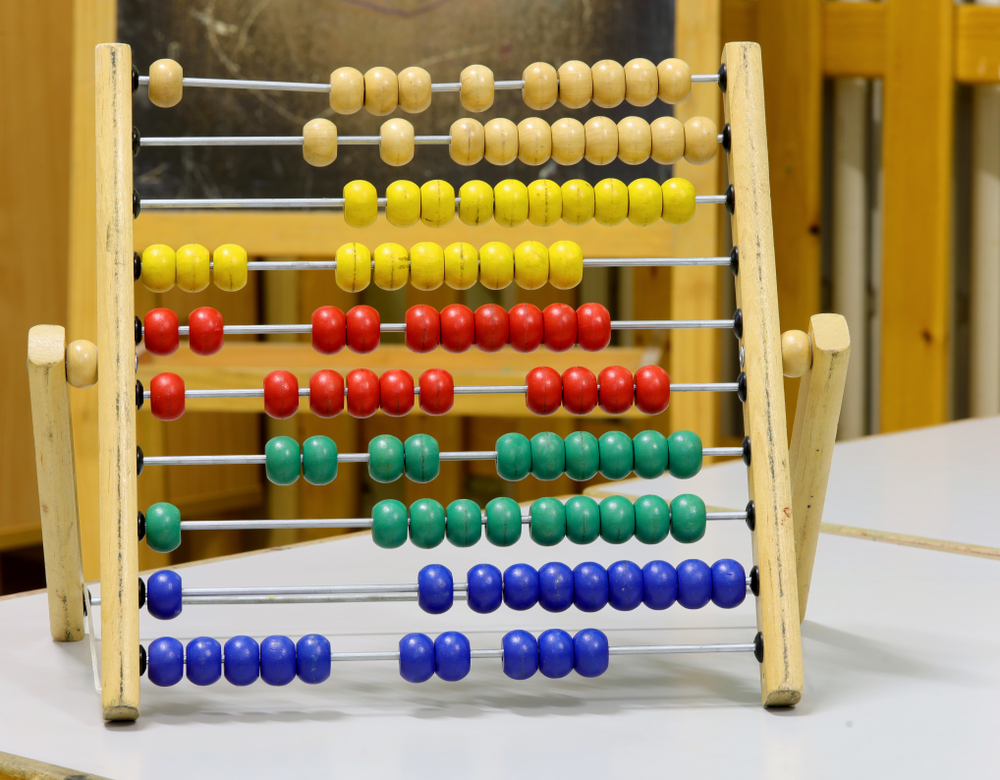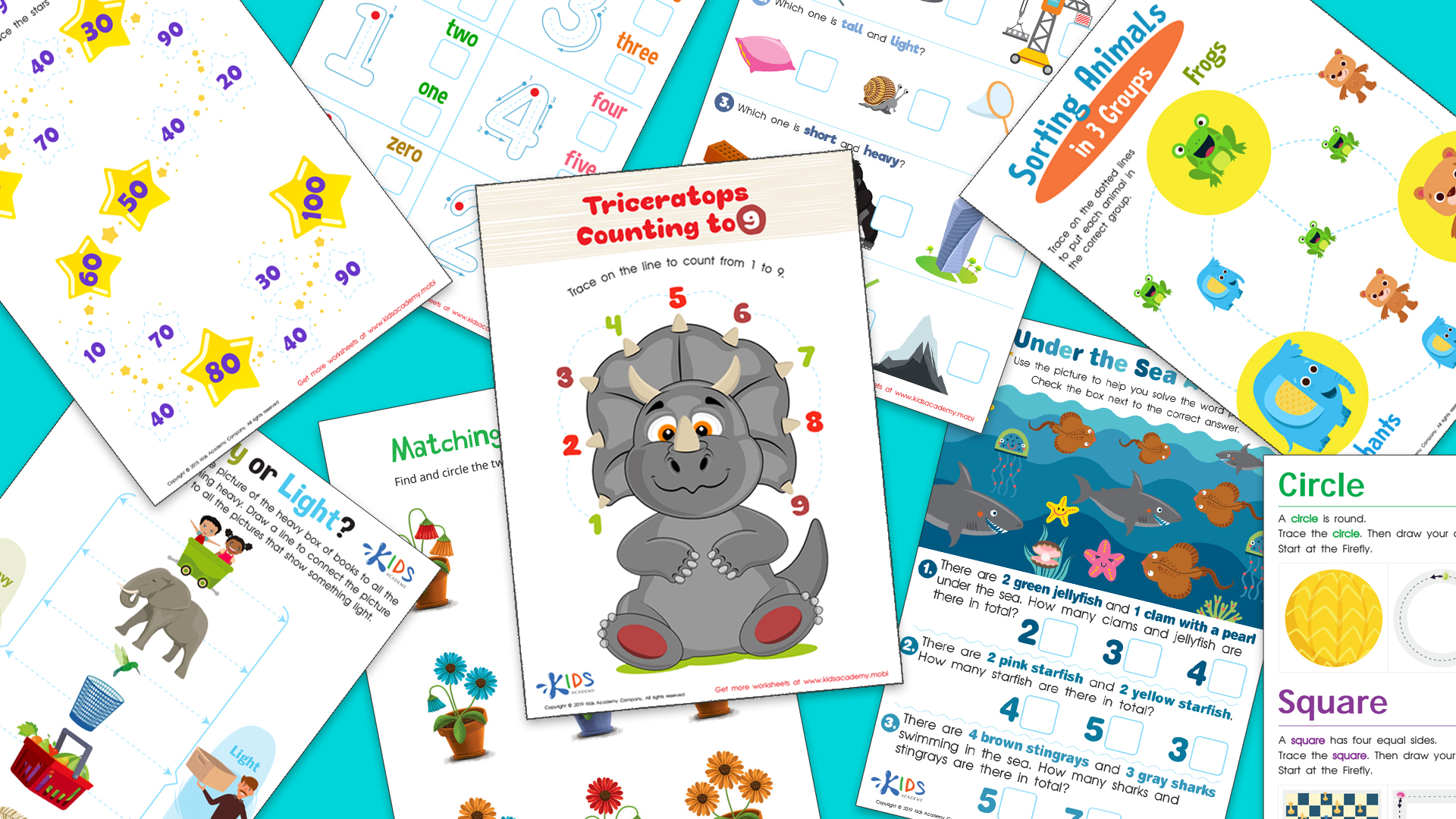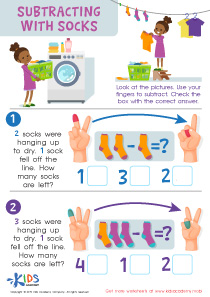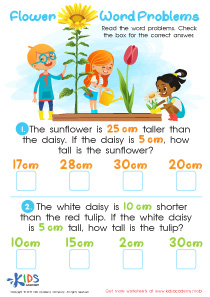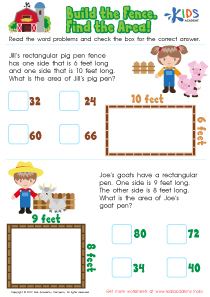Addition skills Addition and Subtraction Word Problems Worksheets for Ages 6-8
11 filtered results
-
From - To
Enhance your child's math abilities with our engaging Addition and Subtraction Word Problems Worksheets tailored for ages 6-8. These worksheets are designed to help young learners develop essential addition skills through fun and relatable real-life scenarios. Each problem encourages critical thinking and problem-solving, making math both challenging and enjoyable. Parents and educators can easily use these resources for classroom activities or homeschooling, ensuring a well-rounded math education. With clear instructions and vibrant illustrations, children will gain confidence in their math skills. Explore our collection today to make learning addition a delightful and educational experience for your child!
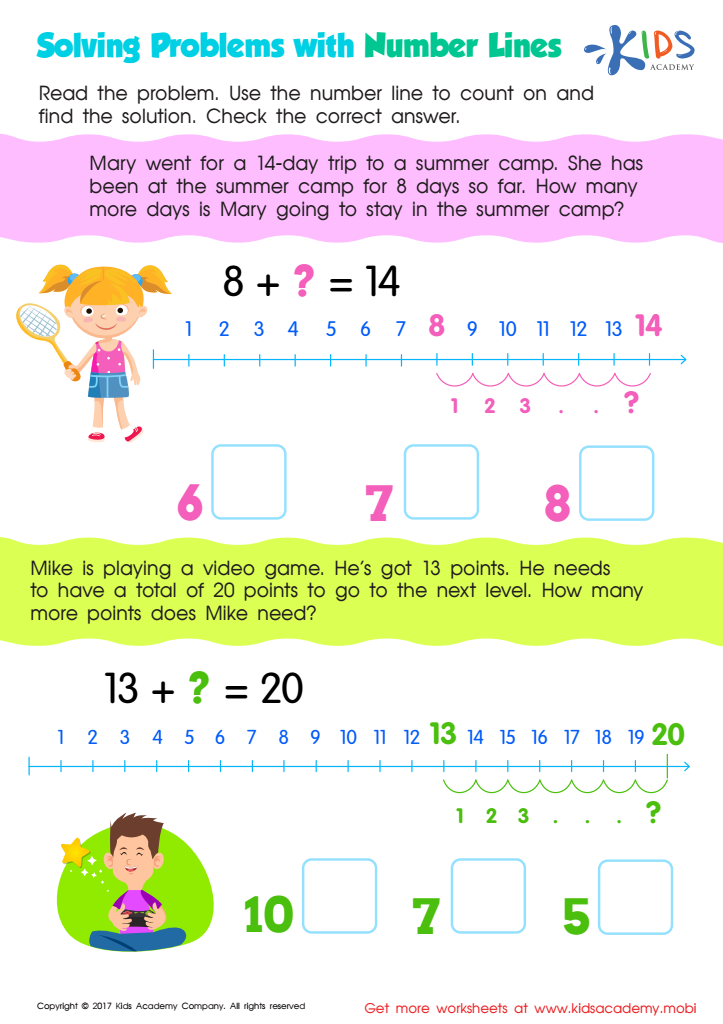

Solving Problems: Number Lines Worksheet
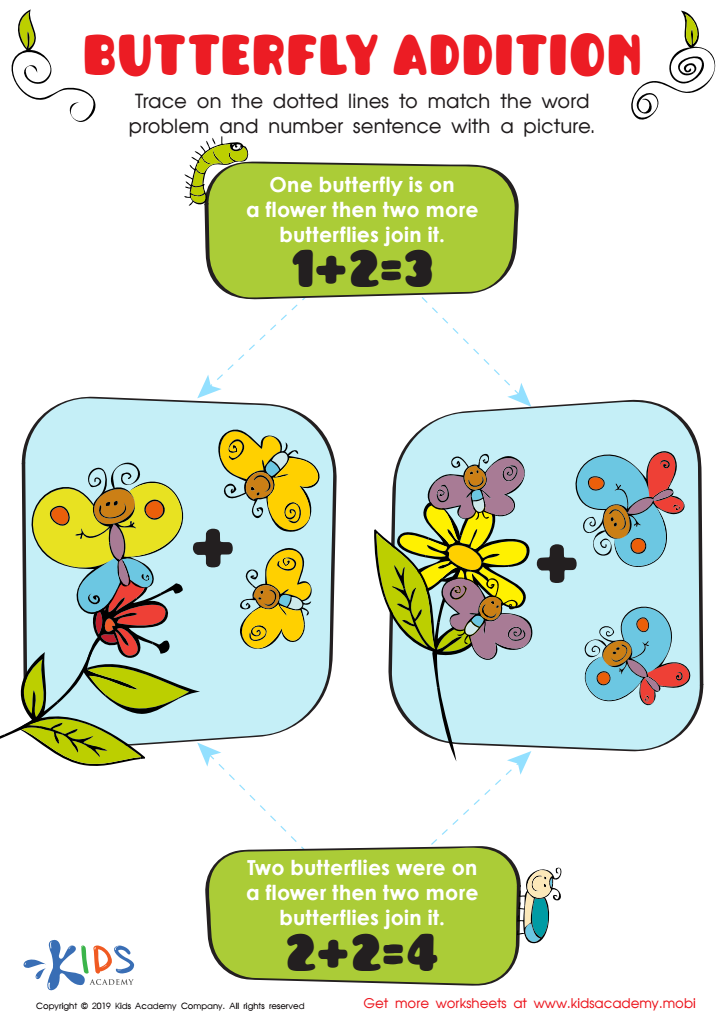

Butterfly Addition Worksheet
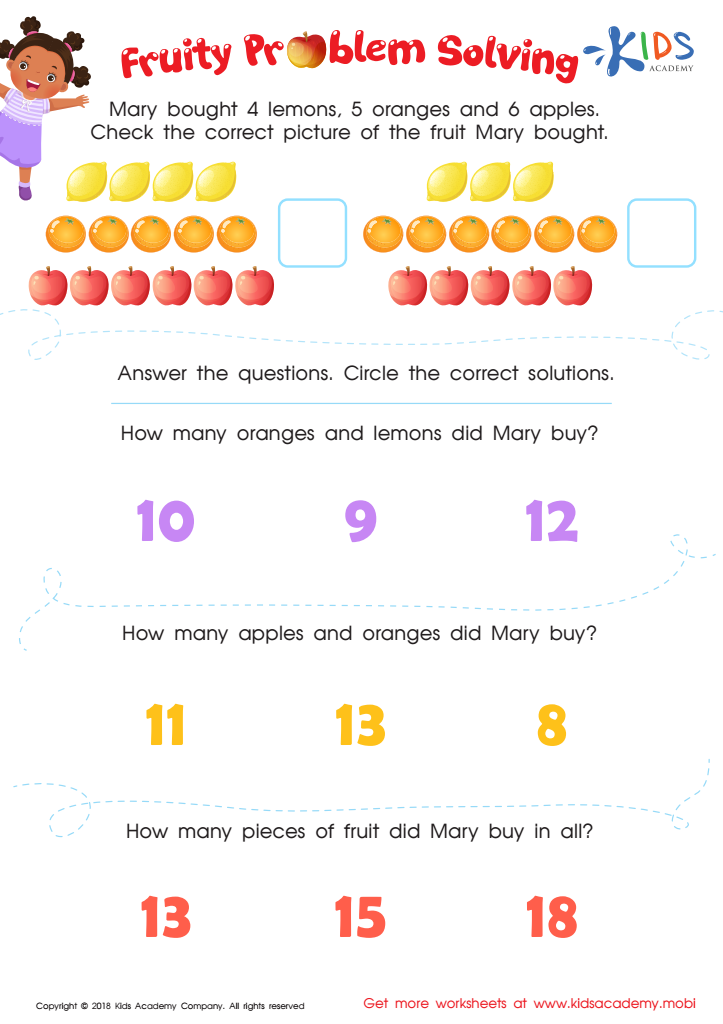

Fruity Problem Solving Worksheet
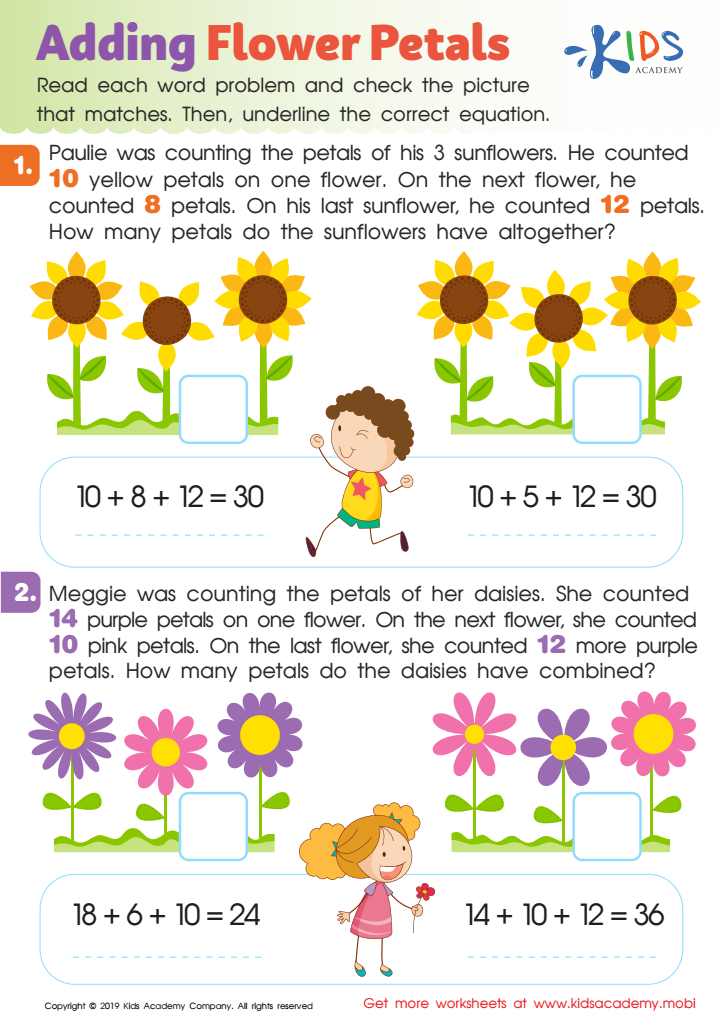

Adding Flower Petals Worksheet
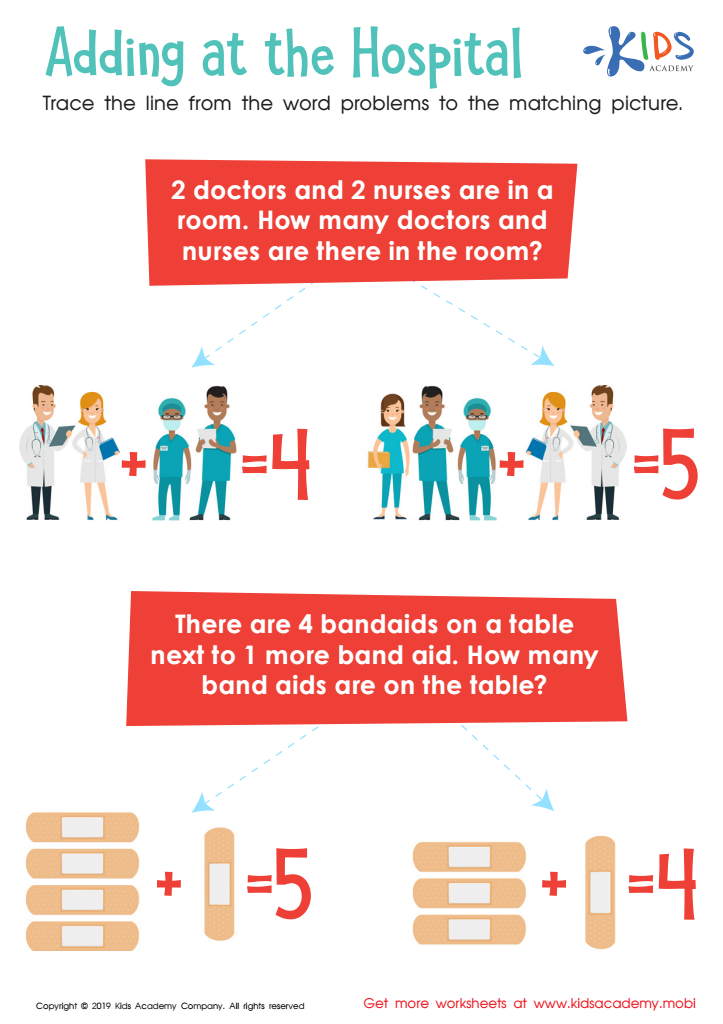

Adding at the Hospital Worksheet
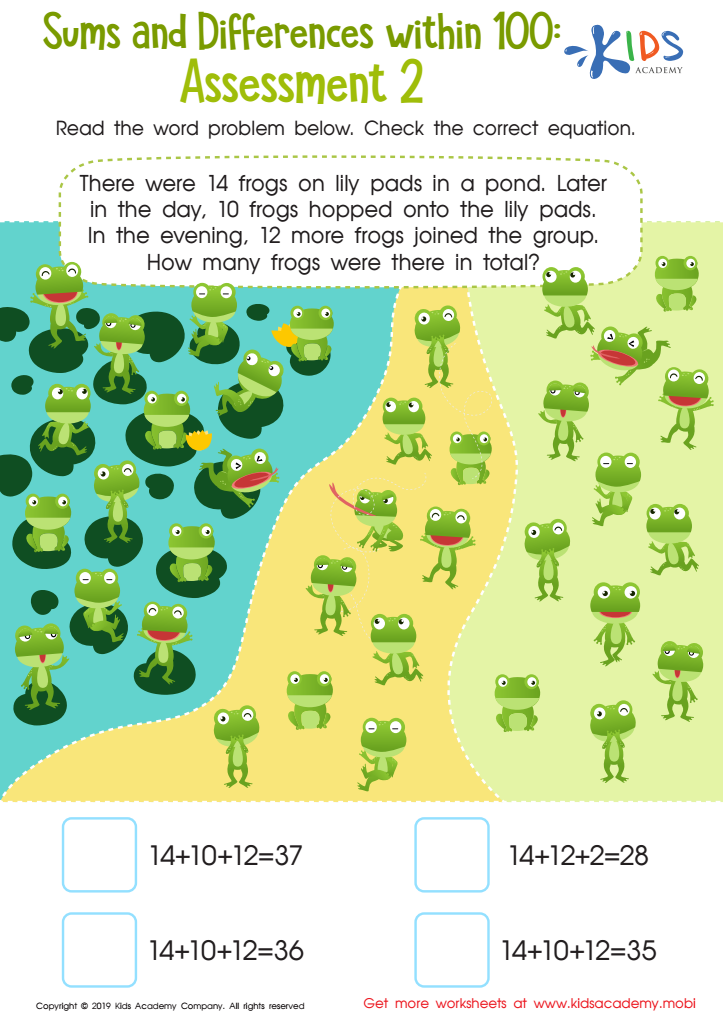

Sums and Differences Within 1 - Assessment 2 Worksheet
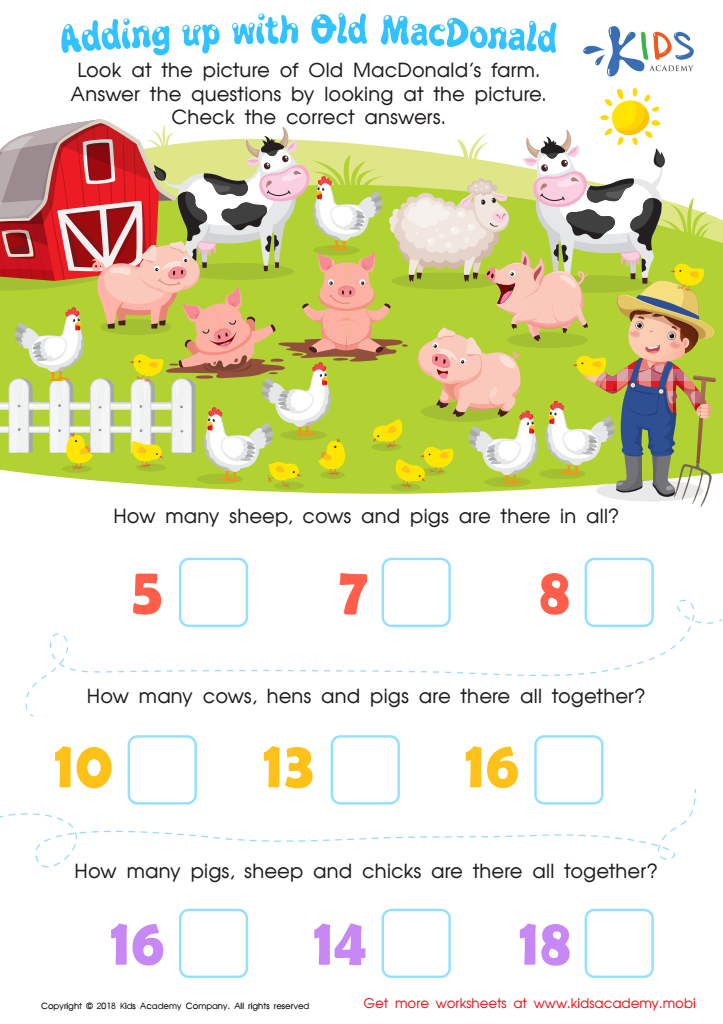

Adding Up with Old MacDonald Worksheet
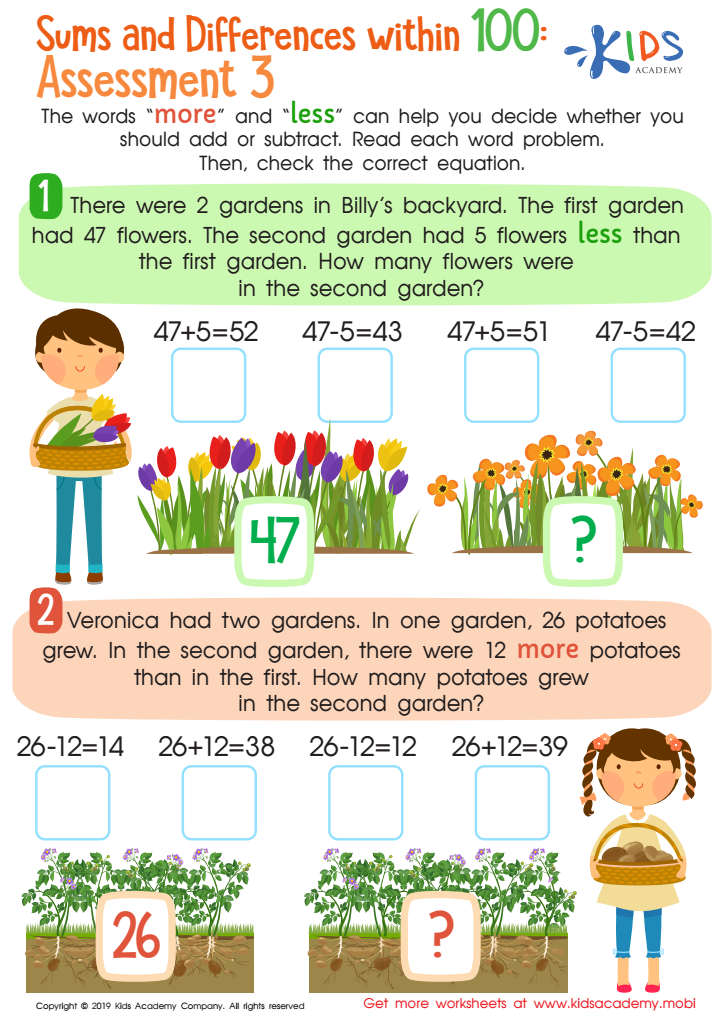

Sums and Differences Within 1 - Assessment 3 Worksheet
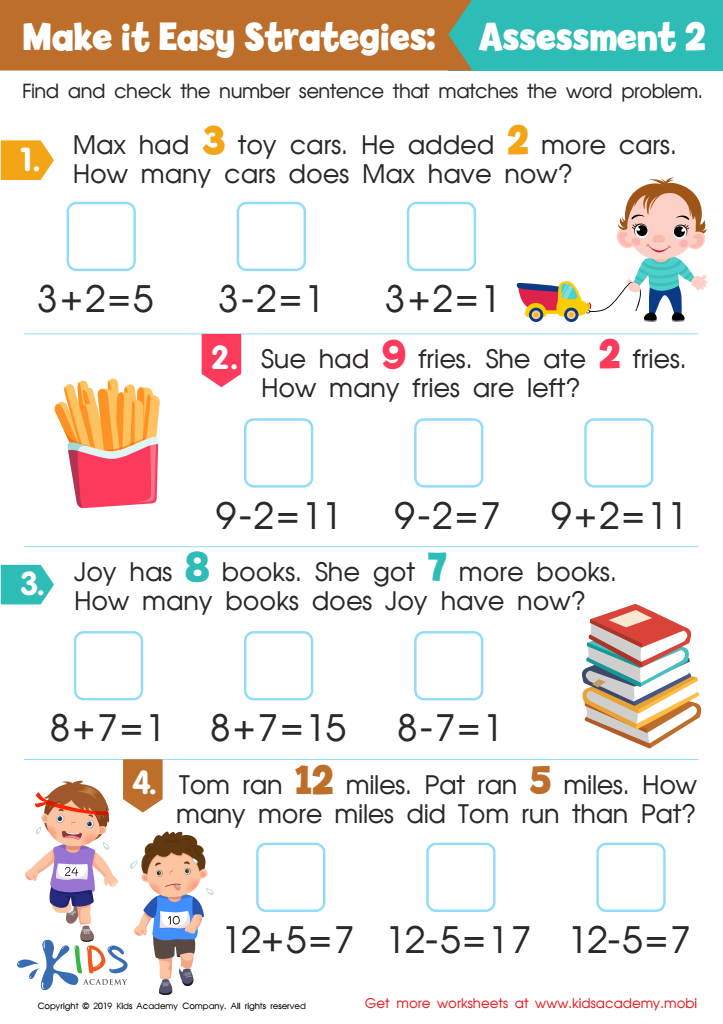

Make it Easy Strategies: Assessment 2 Worksheet
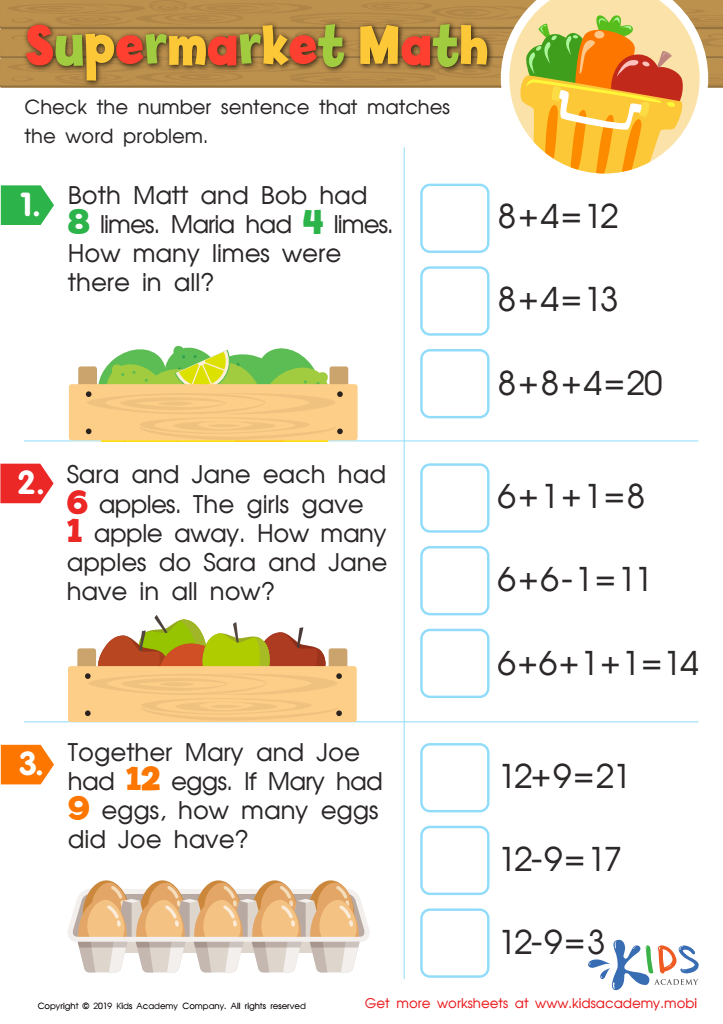

Supermarket Math Worksheet


The Unknown Number - Assessment 3 Worksheet
Parents and teachers should prioritize addition and subtraction word problems for children aged 6-8 because these skills lay the foundation for mathematical understanding and critical thinking. At this age, children are transitioning from grasping basic arithmetic concepts to applying them in practical contexts. Mastering word problems not only enhances their ability to navigate real-life situations—like budgeting or measuring—but also fosters their problem-solving abilities.
Moreover, engaging with word problems encourages children to develop reading comprehension skills, allowing them to better understand what is being asked and think critically about the information provided. These tasks require them to analyze scenarios, identify relevant data, and strategize solutions, skills that extend beyond mathematics into other academic areas and everyday life.
Additionally, fluidity in addition and subtraction supports overall confidence in math. When children understand and can tackle word problems, they’re more likely to feel positive about their mathematical abilities, paving the way for continued growth and interest in STEM fields. Overall, fostering these skills during the early years instills foundational knowledge, enhances cognitive development, and helps children gain the confidence they need to tackle more complex mathematical challenges in the future.

 Assign to My Students
Assign to My Students





